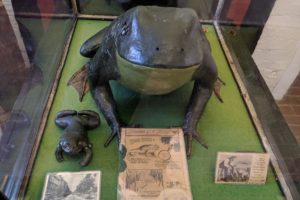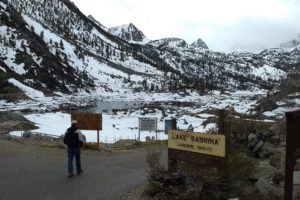Whenever I’ve thought of the city of Wilmington, I’ve thought of the battleship moored there that we could visit. Today’s the day. As we got onboard, we realized that we already have been on a battleship, the USS Alabama in Mobile (2019 southwest swing, gulf coast – part 7: WWII battleship). The two ships are familiar, so in this post we’re going to show you what caught our interest as we walked around and went up and down narrow stairs.


Commissioned on April 9, 1941,the North Carolina was considered to be the world’s greatest sea weapon. (The USS Alabama was built later so was even more advanced.) Constructed after a nearly 2-decade hiatus, she had the finest engineering and technology available and was often referred to as “Showboat.”
This battleship was involved in every major WWII naval offensive in the Pacific Theater, earning 15 battle stars and becoming the most decorated American battleship of WWII. Here are some more stats:
- Has about 15,000 tons of steel armor place, about 42% of her weight
- Could carry almost 2 million gallons of fuel oil and averaged 166 gallons per mile and moved 32 feet per gallon
- produced 8.4 megawatts of electricity, enough to power a small town of 6500 people
- all 9 captains, graduates from the U.S. Naval Academy, became admirals
- Has three 16-inch gun turrets and a surviving Kingfisher aircraft




inside








In July 1942, the change was made for a shielded red lens that would “cut off all direct rays and provide only reflected light which was known to have minimum visibility at a distance.” But that design didn’t work for normal ship operation. The solution was to replace the blue globes with an unshielded red steam-tight globe. When the red was too bright, such as where the sailors were sleeping, the globe could be painted.

While the USS Alabama that we’ve previously seen in a 2019 trip had a fire control system that controlled the guns, here’s an earlier version of the system.


outside



Per Wikipedia: “The Vought OS2U Kingfisher is an American catapult-launched observation floatplane. It was a compact mid-wing monoplane, with a large central float and small stabilizing floats. Performance was modest because of its low-powered engine. The OS2U could also operate on fixed, wheeled, taildragger landing gear. “
It was the “main shipboard observation seaplane used by the U.S. Navy during WWII, and 1,519 of the aircraft were built. It served on battleships and cruisers of the U.S. Navy, with the U.S. Marine Corps in Marine Scouting Squadron Three (VMS-3), with the U.S. Coast Guard at coastal air stations; at sea with the Fleet Air Arm of the Royal Navy; with the Soviet Navy; and with the Royal Australian Navy.

- spotting gunfire
- patrolling for enemy submarines
- rescuing airmen
- towing targets for anti-aircraft batteries
- flying mail runs to ports
- making flights for radar calibration


I thought we had seen all there was to see in Wilmington, but we’re just beginning. Come explore with us.




